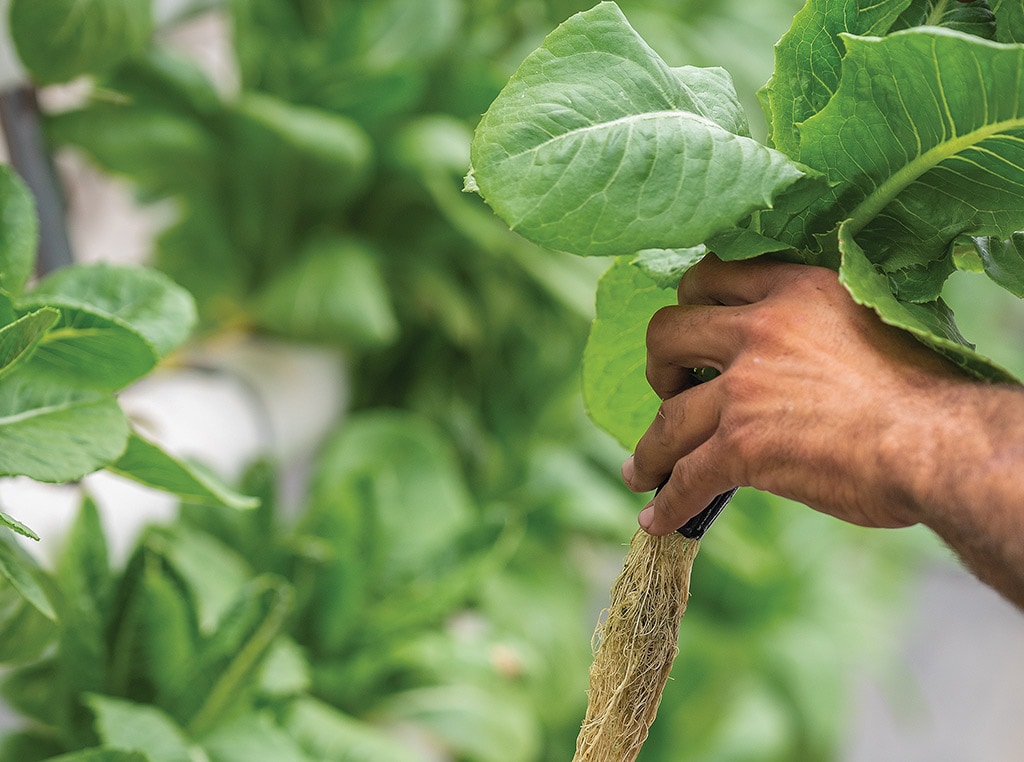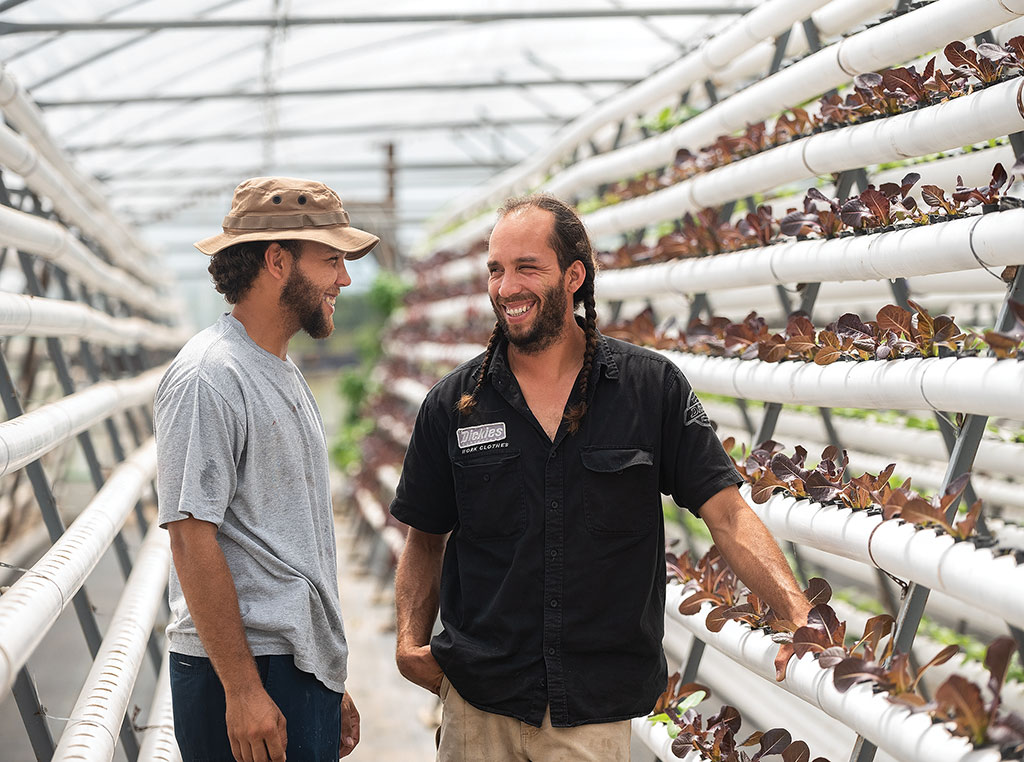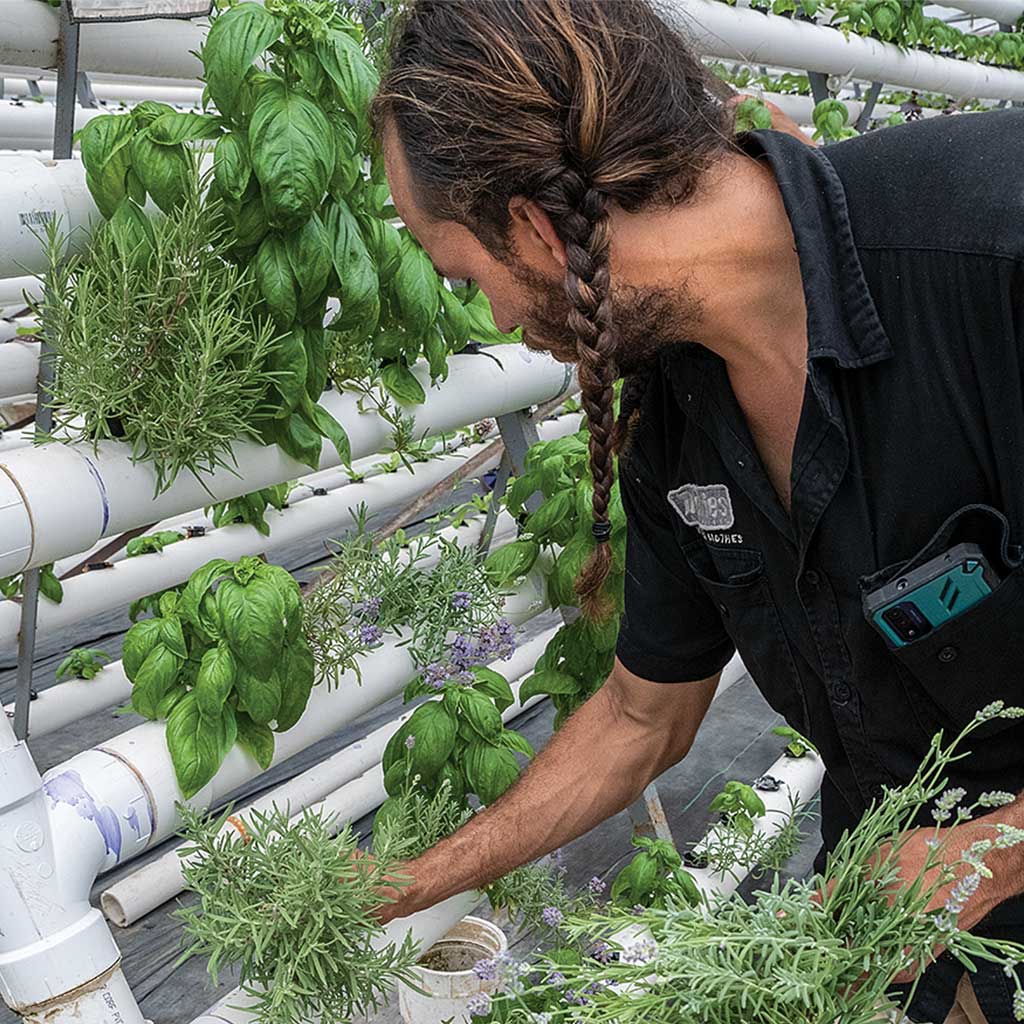Agriculture, Farm Operation December 01, 2022
Water in the End Rows
.
Next generation builds hydroponic greenhouse in parents' field.
The oldest of five, Roderick McMillan wanted to build his own piece of the pie. And once he got started, his dream mushroomed with possibilities for his siblings.
"We don't want to eat off our parents' plate," he says, already in his seventh year of the hydroponic vegetable enterprise he and his brother Eric started.
Their parents have a small cash crop and livestock farm in southeastern North Carolina. The land in Robeson County is particularly sandy, and recent dry years have not been good to the crops.
Even without these constraints, when Roderick decided he'd rather farm than work in town, he knew he wanted to start something of his own instead of partner with his parents in their cash crop business.
That pride and determination led him to "YouTube University," as he calls it, to learn how to raise vegetables in a hydroponic greenhouse.
"This piece of ground never produced well," Roderick says about the quarter-acre sliver on the edge of one of his parents' fields where the 10,000 square foot greenhouse stands today. Shaving off the small footprint with low yield potential did not change his parents' operation much but has given the vegetable business a solid foundation.
The two brothers have equal shares of the MG3 Farms enterprise, but the whole family helped build the greenhouse. It had previously been used by another farmer to start tobacco plants, and the McMillans retrofitted it with rungs of PVC pipes at just the right pitch for water to flow from end to end. They placed it next to a clearing in the adjacent woods allowing ample space for outdoor set-up, water and heating equipment, and delivery trucks.
Roderick and Eric tested many different fruits and vegetables and have landed on lettuce and herbs being the best fit for their operation and customers. The 4-row greenhouse matches well with lettuce growth time so they can start one row each week for consistent supply year-round.
Above. Eric and Roderick McMillan - young, Native American, beginning farmers - have carved out a niche among their parents' row crop acres, growing hydroponic lettuce and herbs since 2016. Their goal is to keep expanding so they can build a farm stand and bring their other three siblings into the enterprise. James Dunn, of the North Carolina Department of Agriculture Small Farm Division, helps the men plan and find resources.
Getting established. The young men have learned that one of the hardest parts of succeeding as farmers is being your own boss and balancing your ambitions with reality.
"I'm not proud of how the greenhouse looks right now," Roderick, age 30, says humbly. They were fighting a waterborne disease at the time that wilted many plants and turned leaves brown.
They have no doubt the greenhouse will soon be full of quality lettuce again because they have their eyes set on accomplishing more. They want to expand the enterprise with parts their other siblings can manage, as well. "We want to build a farm store at the edge of the property and maybe even a music venue for entertainment," Roderick says with the passion back in his voice.
Beyond relying on their own ingenuity, they have received production and business management help through the North Carolina Department of Agriculture's Small and Minority Farms Program. James Dunn, their contact, helps them brainstorm, find resources, and make connections with other farmers, specialists, and customers.
"It's all about relationships," Dunn says. "I am able to make them aware of grants, research, and opportunities they may otherwise not find on their own." ‡
Read More

AGRICULTURE, SUSTAINABILITY
Building Bonds
Innovation drives Southern California food hub and regenerative farms.

AGRICULTURE, EDUCATION
Small Grains, Big Questions
WSU Breadlab researchers tackle opportunities for cereals.




